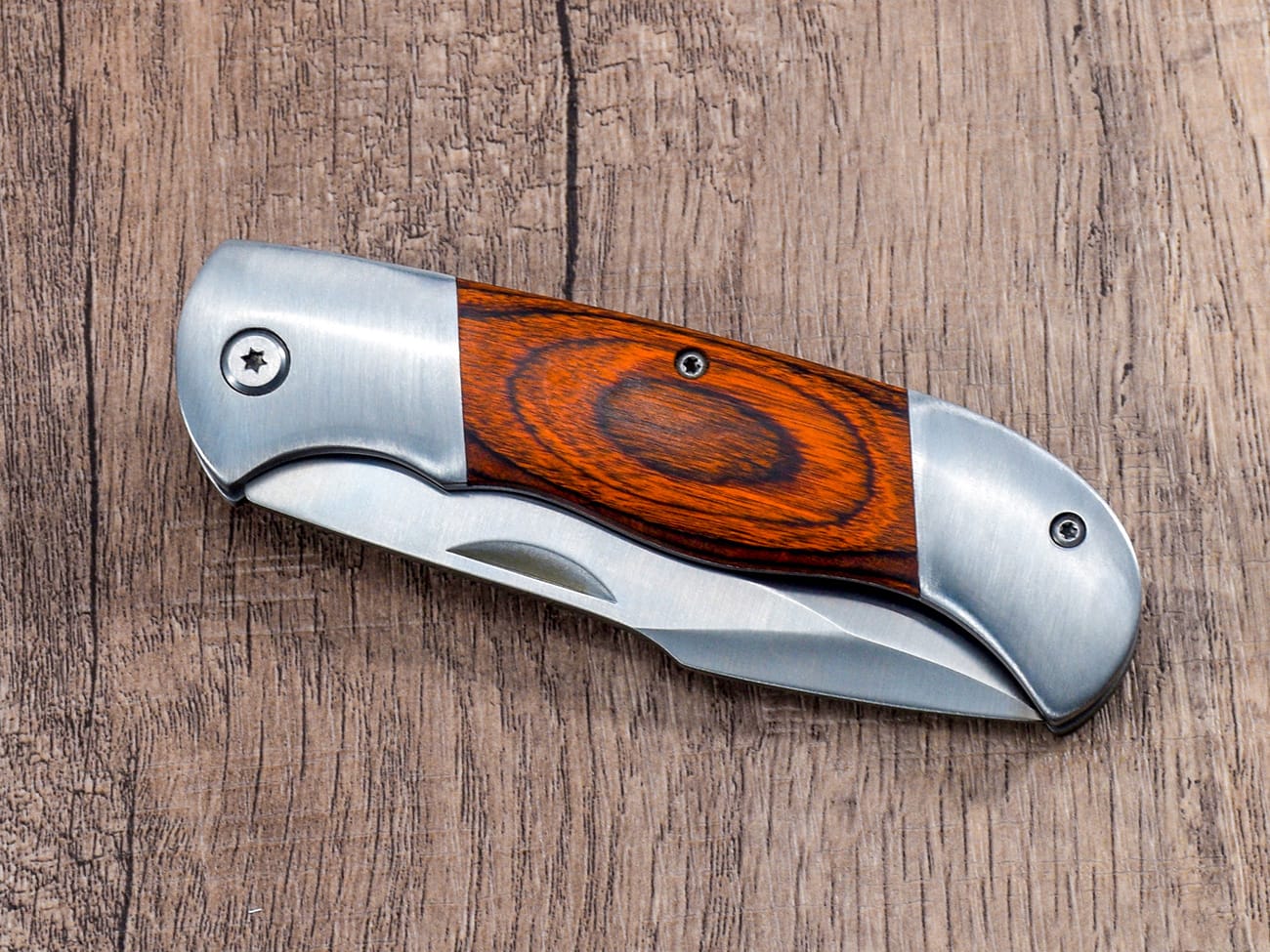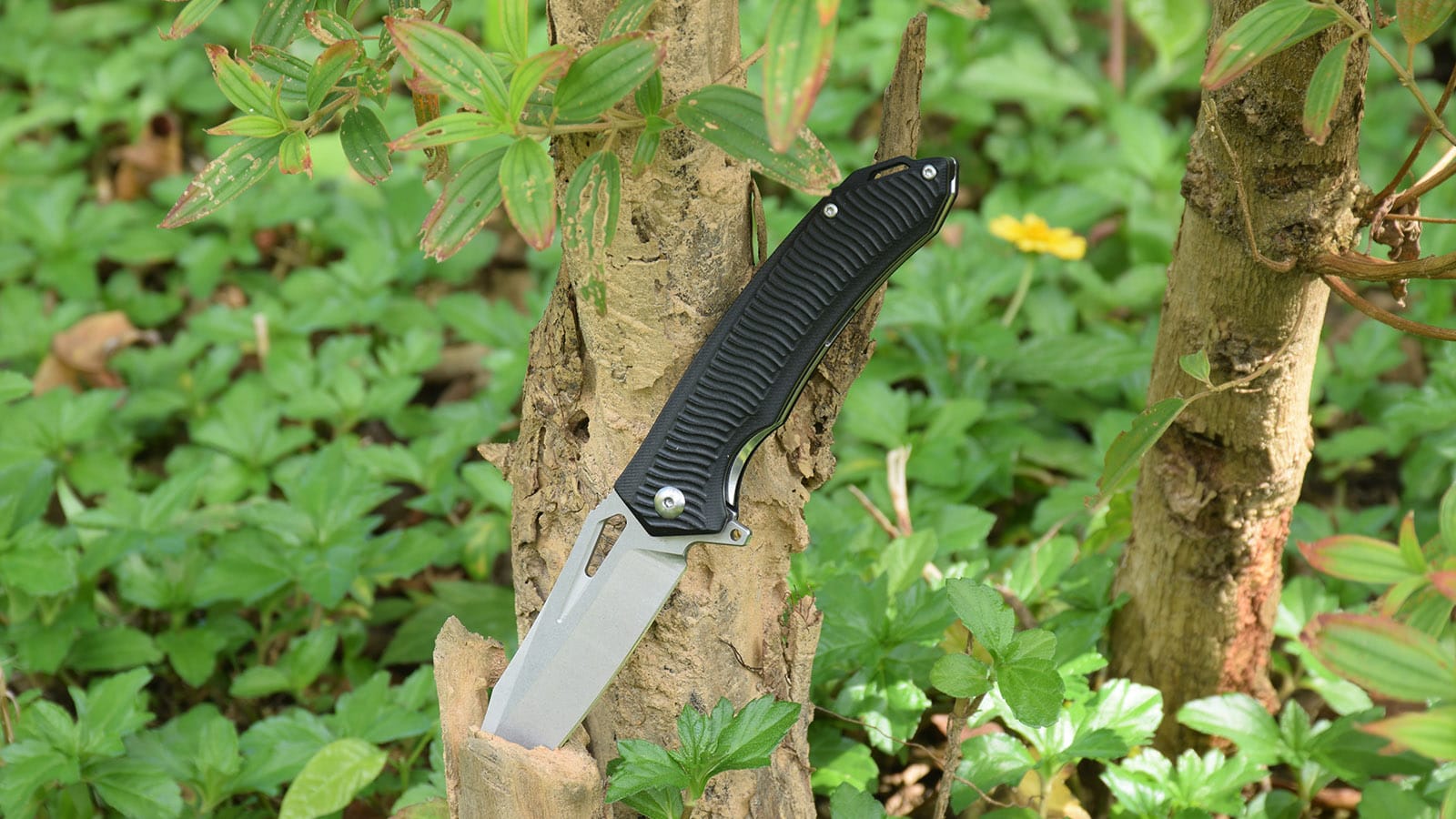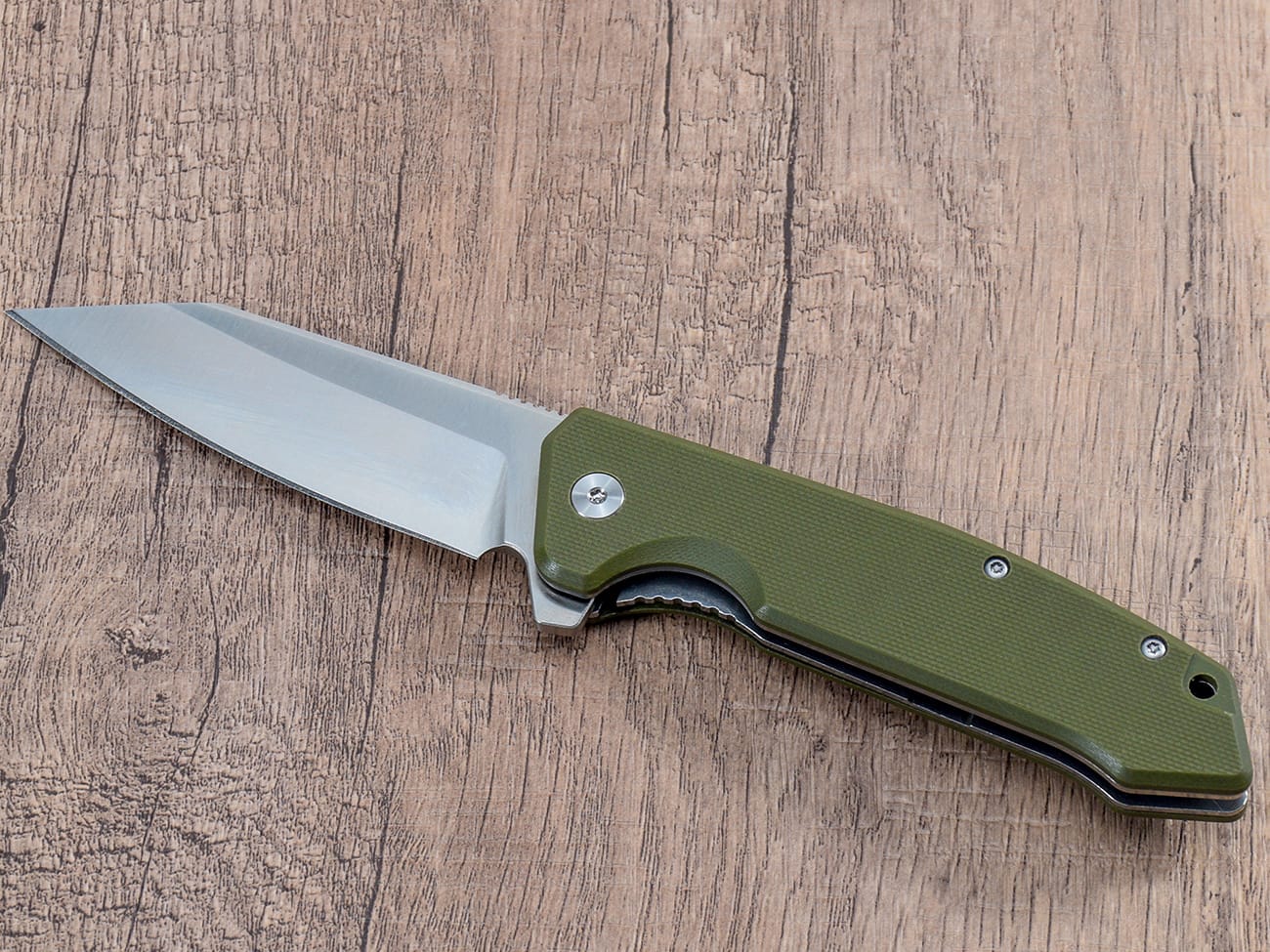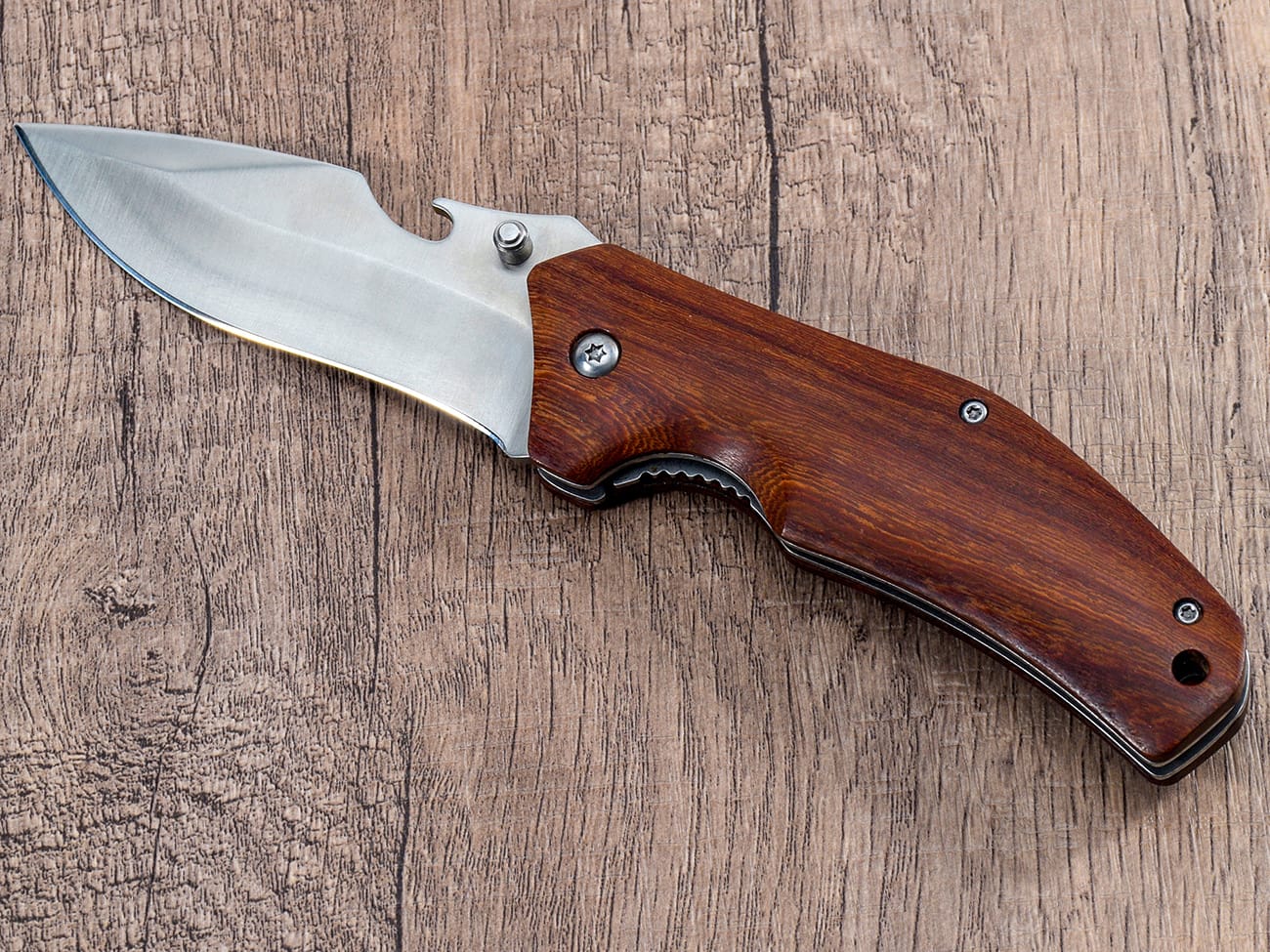Är du trött på att kämpa med trista knivar i köket? En vass kniv är inte bara säkrare utan gör också matlagning till en lek. I den här omfattande guiden kommer vi att utforska in- och utsidan av att använda en knivslip för att hålla dina blad i toppskick. Oavsett om du är en professionell kock eller en husmanskock, är att bemästra konsten att slipa knivar en viktig färdighet som kommer att höja din kulinariska upplevelse.
Varför det är viktigt att slipa dina knivar
Innan vi dyker in i teknikerna, låt oss förstå varför knivslipning är avgörande:
- Säkerhet: En vass kniv kräver mindre kraft, vilket minskar risken för olyckor.
- Effektivitet: Vassa knivar gör matlagningen snabbare och enklare.
- Precision: Uppnå renare snitt och bättre presentation med ett vasst blad.
- Lång livslängd: Regelbundet underhåll förlänger livslängden på dina knivar.
Nu när vi har fastställt vikten, låt oss utforska hur man använder olika typer av knivslipar effektivt.
Typer av knivslipare: Att välja rätt verktyg
Det finns flera typer av knivslipar tillgängliga, alla med sina egna fördelar:
- Brynstenar: Traditionella och mångsidiga
- Genomdragsvässare: Snabb och enkel att använda
- Elslipare: Effektiva och konsekventa
- Honingstänger: För dagligt underhåll
Låt oss ta en närmare titt på varje typ och hur man använder dem på rätt sätt.
Hur man använder ett bryne: Den traditionella metoden
Brynstenar gynnas av många proffs för sin precision och kontroll. Så här använder du en:
- Blötlägg stenen: Doppa din bryne i vatten i 10-15 minuter före användning.
- Ställ upp din arbetsyta: Lägg stenen på en fuktig trasa för att förhindra att den glider.
- Hitta rätt vinkel: Håll kniven i 15-20 graders vinkel mot stenen.
- Börja slipa: Börja vid hälen på bladet och dra det över stenen, bibehåll vinkeln.
- Upprepa: Gör 10-15 pass på varje sida av bladet.
- Byt till en finare korn: Flytta till en finare kornsten för att förfina kanten.
- Testa skärpan: Testa försiktigt bladet på ett papper.
Kom ihåg att övning ger färdighet när använd en bryne för att slipa kniven. Det kan ta tid att bemästra, men resultatet är värt det.
Att bemästra Pull-Through Sharpener: Snabbt och enkelt
Genomdragsvässare är populära för sin enkla användning. Så här får du ut det mesta av dem:
- Välj rätt spår: De flesta genomdragsvässare har grova och fina spår.
- Håll skärpan stadigt: Placera den på en plan yta eller håll den stadigt.
- Dra igenom kniven: Börja vid hälen och dra hela bladets längd genom springan.
- Använd lätt tryck: Låt skärpan göra jobbet; tryck inte för hårt.
- Upprepa: Gör 5-10 pass genom varje springa.
- Alternativa sidor: Slipa båda sidorna av bladet jämnt.
Även om de inte är lika exakta som bryne, är genomdragbara slipmaskiner bra för snabba bättringar och underhåll av dina knivar mellan mer grundliga slipningar.
Elektriska slipmaskiner: effektivitet och konsistens
Elektriska slipmaskiner är ett bekvämt sätt att underhålla dina knivar. Så här använder du en effektivt:
- Läs manualen: Bekanta dig med din specifika modells instruktioner.
- Slå på skärpan: Se till att den är ansluten och fungerar smidigt.
- Välj rätt spår: De flesta elektriska skärpningsmaskiner har flera steg för grov till fin skärpa.
- Sätt i kniven: Börja vid hälen och dra bladet genom springan.
- Använd stadigt, jämnt tryck: Tryck inte för hårt; låt maskinen vägleda dig.
- Upprepa: Gör 3-5 passeringar genom varje steg.
- Rengör bladet: Torka av metallspån efter slipning.
Elektriska slipmaskiner är utmärkta för att bibehålla en konsekvent vinkel och snabbt få en skarp egg. Var dock försiktig så att du inte skärper för mycket, eftersom det kan slita ner bladet snabbare.
Honing Stavar: Dagligt underhåll för toppprestanda
En bryningsstång, även kallad slipstål, är nödvändig för dagligt knivunderhåll. Så här använder du en:
- Håll stången vertikalt: Spetsen ska vila på en skärbräda.
- Hitta rätt vinkel: Håll kniven i 20 graders vinkel mot stången.
- Börja vid hälen: Placera hälen på bladet mot toppen av stången.
- Dra ner kniven: Dra bladet nedåt och mot dig, behåll vinkeln.
- Alternativa sidor: Upprepa på andra sidan av bladet.
- Upprepa: Gör 5-10 pass på varje sida.
Slipning justerar eggen på ditt blad och bibehåller skärpan mellan mer grundliga skärpningar. Det är ett snabbt och enkelt sätt att hålla dina knivar i toppskick.
Vanliga misstag att undvika vid slipning av knivar
Även erfarna kockar kan göra misstag vid skärpning. Här är några fallgropar att undvika:
- Använder fel vinkel: Konsistens är nyckeln; bibehåll rätt vinkel hela tiden.
- Att applicera för mycket tryck: Låt sliparen göra jobbet; överdriven kraft kan skada bladet.
- Försumma regelbundet underhåll: Vänta inte tills din kniv är helt matt med att slipa den.
- Överslipning: Alltför ofta skärpning kan slita på bladet i onödan.
- Ignorera säkerheten: Slip alltid bort från din kropp och var uppmärksam på den vassa kanten.
Genom att undvika dessa misstag förlänger du livslängden på dina knivar och uppnår bättre resultat.

En välskött kniv är en fröjd att använda i köket
Att välja rätt knivslip för dina behov
Med så många tillgängliga alternativ, hur väljer du rätt skärpa? Tänk på dessa faktorer:
- Skicklighetsnivå: Brynstenar kräver mer skicklighet, medan elektriska slipmaskiner är mer användarvänliga.
- Användningsfrekvens: För dagligt underhåll är en honing stav väsentlig.
- Typer av knivar: Vissa slipmaskiner fungerar bättre med vissa bladtyper.
- Budget: Priserna sträcker sig från överkomliga manuella slipmaskiner till avancerade elektriska modeller.
- Utrymme: Tänk på vilket lagringsutrymme du har tillgängligt.
För de flesta hemkockar är en kombination av en genomdragsvässare och en honing rod en bra utgångspunkt. När du blir mer bekväm med knivunderhåll, kanske du vill investera i ett bryne för mer exakt kontroll.
Underhåll din knivslipare
Följ dessa underhållstips för att säkerställa att slipmaskinen fortsätter att fungera bra:
- Rengör efter användning: Torka av skärpen för att ta bort metallspån.
- Förvara på rätt sätt: Förvara din slipmaskin på en torr plats för att förhindra rost.
- Byt ut vid behov: Med tiden kan slipytor slitas ner.
- Följ tillverkarens instruktioner: Varje skärpning kan ha särskilda skötselkrav.
Genom att ta hand om din slipare säkerställer du att den fortsätter att hålla dina knivar i toppskick.
Inverkan av bladmaterial på skärpning
Olika bladmaterial kräver olika skärpningsmetoder:
- Rostfritt stål: Vanligast och lätt att slipa med olika metoder.
- Kolstål: Håller en kant bra men kräver oftare slipning.
- Keramik: Kräver speciella diamantslipare.
- Damaskusstål: Vackert men kan vara utmanande att slipa ordentligt.
Förstå din knivbladsmaterial hjälper dig att välja den mest effektiva skärpningsmetoden.
Slipning av specialknivar
Vissa knivar kräver särskild uppmärksamhet vid slipning:
- Tandade knivar: Använd en specialiserad skärpning eller stav för att underhålla tandningarna.
- Japanska knivar: kräver ofta en mer exakt vinkel och skonsammare beröring.
- Fickknivar: Kompakta slipmaskiner finns tillgängliga för underhåll på språng.
- Jaktknivar: Hållbarhet är nyckeln; välj en slipare som klarar utomhusbruk.
Undersök alltid de specifika kraven för dina specialknivar för att underhålla dem ordentligt.
Skärbrädornas roll vid knivunderhåll
Ditt val av skärbräda kan påverka hur ofta du behöver slipa dina knivar:
- Trä: Skonsamt mot kniveggarna men kräver mer underhåll.
- Plast: Lätt att rengöra men kan matta knivar snabbare än trä.
- Glas: Attraktivt men mycket hårt på knivkanterna; undvika för att hacka.
- Bambu: Miljövänlig och relativt skonsam mot knivar.
Att använda rätt skärbräda kan hjälpa till att behålla din knivs egg mellan skärpningarna.
Slutsats: Vässa dina färdigheter för bättre matlagning
Att bemästra konsten att slipa knivar är en ovärderlig färdighet för alla kockar. Genom att förstå de olika typerna av slipmaskiner, tekniker och underhållsmetoder kan du hålla dina knivar i toppskick. Kom ihåg dessa nyckelpunkter:
- Välj rätt slipare för dina behov och kompetensnivå
- Behåll en konsekvent vinkel vid skärpning
- Använd lätt tryck och låt sliparen göra jobbet
- Utöva regelbundet underhåll med en honing rod
- Var uppmärksam på knivens bladmaterial och specifika krav
- Använd lämpliga skärbrädor för att bevara din knivsegg
Med vassa knivar till ditt förfogande kommer du att uppleva matlagning roligare, effektivare och säkrare. Så ta din favoritkniv och börja slipa – dina kulinariska skapelser kommer att tacka dig!




